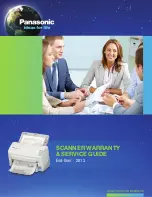
LAUNCH
CRT 501 Series User Manual
4
showed the following:
• A large number of vehicles had deteriorating or degraded emissions-related
components. These components were causing an increase in emissions.
• Because OBD I systems only detect failed components, the degraded
components were not setting codes.
• Some emissions problems related to degraded components only occur
when the vehicle is being driven under a load. The emission checks
being conducted at the time were not performed under simulated driving
conditions. As a result, a significant number of vehicles with degraded
components were passing Emissions Tests.
•
Codes, code definitions, diagnostic connectors, communication protocols
and emissions terminology were different for each manufacturer. This
caused confusion for the technicians working on different make and model
vehicles.
To address the problems made evident by this study, CARB and the EPA
passed new laws and standardization requirements. These laws required
that vehicle manufacturers to equip their new vehicles with devices capable
of meeting all of the new emissions standards and regulations. It was also
decided that an enhanced on-board diagnostic system, capable of addressing
all of these problems, was needed. This new system is known as
On-Board
Diagnostics Generation Two (OBD II/OBD 2)
. The primary objective of
the OBD II system is to comply with the latest regulations and emissions
standards established by CARB and the EPA.
The Main Objectives of the OBD II System are:
• To detect degraded and/or failed emissions-related components or systems
that could cause tailpipe emissions to exceed by 1.5 times the Federal Test
Procedure (FTP) standard.
• To expand emissions-related system monitoring. This includes a set of
computer run diagnostics called Monitors. Monitors perform diagnostics
and testing to verify that all emissions-related components and/or systems
are operating correctly and within the manufacturer’s specifications.
• To use a standardized Diagnostic Link Connector (DLC) in all vehicles.
(Before OBD II, DLCs were of different shapes and sizes.)
•
To standardize the code numbers, code definitions and language used to
describe faults. (Before OBD II, each vehicle manufacturer used their own
code numbers, code definitions and language to describe the same faults.)
• To expand the operation of the Malfunction Indicator Lamp (MIL).
Summary of Contents for CRT 501 Series
Page 1: ...V1 00 000 09 08 2022 ...











































